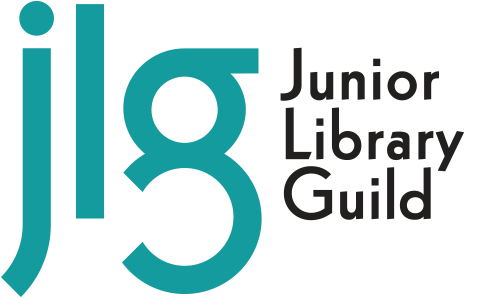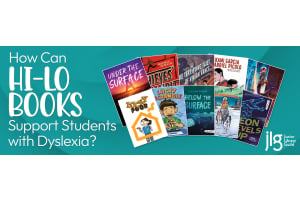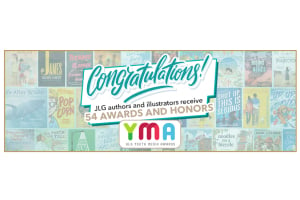Braille Literacy Month: How It All Began, and How Libraries Are Helping to Shape the New Era of Braille


The beginnings of true literacy for the visually impaired
As librarians well know, literacy is a great liberator. Whether it be the desire to create through concepts of math and science or to explore the world of imagination through the constructs of our mind, literacy can unleash the highest forms of human potential. To read and to write, (whether it is through the sense of sight or the sense of touch) is a triumph of humanity that should be protected, cherished, and equally accessible to all.
Here’s a look back at how literacy for the visually impaired began with the braille system, where it is headed, and how we as a society are continuing along the path to a more inclusive world for those who are visually impaired.
Perfecting the system
Over 200 years ago in 1809, the inventor of the Braille system, Louis Braille was born in Coupvray, France. He would eventually attend the National Institute for Blind Youth in Paris, France, where his love for reading first began. The seed of the current braille system was first planted when French artillery captain Charles Barbier was invited as a guest speaker to the school that Braille attended. Barbier had come to introduce Sonography, a system he created for French soldiers to safely communicate with at night. Sonography, or “night writing” was introduced to the school as a method of auxiliary teaching, however, it was complex and had its setbacks.
Determined to create an easier path to literacy for the visually impaired, Louis Braille reimagined Barbier's system and at age 15, the Braille system was born. Braille eventually made its way to the rest of the world and is used today by visually impaired individuals in order to read and write in their native language. Thanks to Louis Braille, the braille system has allowed the opportunity for visually impaired individuals to participate in society, enriching the lives of the visually impaired around the globe.
Present-day braille
The decline of braille literacy
It goes without saying that literacy is deeply embedded within the structures of our society. It’s also known that there’s a strong correlation between the ability to read braille and higher levels of education, the likelihood of employment, and greater income. Over the past several decades, however, statistics have shown a significant decline in braille literacy. According to this NFB article, William M. Raeder, president of the National Braille Press in Boston stated that in the 1970s over 50 percent of visually impaired people in the United States knew braille. In 2010, however, it was estimated that out of almost 60,000 children who are legally blind in the U.S, only 9-12 percent were registered braille users. In fact, the National Federation of the Blind estimates that only one out of ten visually impaired people can read braille.
So why the decline in braille literacy? Some argue that a combination of factors is to blame, such as the reduction of braille instruction that happened with the mainstreaming of visually impaired students, coupled with assistive technologies such as screen-readers. According to this SLJ article, students and teachers have come to depend on text-to-speech programs, hindering the ability of vision-impaired children to learn written language.
The digitalization of information has also played its part, leading the visually impaired to what this NFB article describes as an “information paradox: they have more knowledge at their disposal, while their ability to read and write declines.”
The impact of braille on learning outcomes
While audiobooks may be a better fit for those who are both visually and mobility impaired, braille is especially helpful for the visually impaired in subjects like math and science.
As one student from the Perkins School for the Blind states in this Paths to Literacy article, “ It's especially important for people to learn math and science in braille, due to the spatial concepts.” Another student mentioned, “I find that I'm a more active learner when I'm able to read the information with my fingertips.”
In the NFB article, a former student at the University of Arizona also remarked, “I have a feeling the way our brains are designed, learning how to read opens up parts of your brain," she said, adding that she believes math and science notations are only possible for those fluent in braille. This brings us to the role of libraries in supporting braille literacy.
How modern libraries serve the braille community
The NLS and Their Network of Public Libraries
In spite of the national decrease in braille literacy, librarians are continuing to work hard on increasing access to braille.
At the same time, technology also continues to transform the roles of libraries, including services and assistive technologies for the visually impaired. Currently, the National Library for the Braille and Print Disabled partners with public libraries nationwide to provide a large network of participating libraries that offer patrons free special-format library services and access to the BARD (Braille and Audio Reading Download) website and app.
Talking Books, a free program that can be downloaded through BARD, offers more than a hundred thousand audiobooks, magazines, and music scores, which patrons can access with their desktop computers and smart devices. The NLS also launched a pilot program in 2016 where they teamed up with the Perkins School for the Blind to provide 200 Orbit Readers (similar to kindles) to public library patrons.
Public library branches keeping up with the latest innovations
Local NLS partner branches, such as the Andrew Heiskell Braille and Talking Book Library in New York, offer patrons access to one of the largest physical collections of braille books in the United States (around 14,000 titles.) As an NLS library partner, they also provide assistive technologies like ebraille readers, additional physical braille books offsite that can be mailed to patrons, audiobooks, downloadable digital braille books, and magazine subscriptions.
Some public libraries are also at the forefront of innovation by providing in-depth training on the latest in assistive technology. In the Atlantic article, A Public Library Brings Opportunity to the Blind, the Heiskell Library’s assistive technology program coordinator, Chancey Fleet ( who is also visually impaired) began an ambitious program to teach visually impaired patrons how to use screen-reading tools, apps, as well as training to use coding and software to “design and create tactile maps, images, graphs, diagrams, actual objects, and other spatial information.
Innovative technology = greater accessibility
In addition to the expanding roles of libraries in promoting braille literacy, recent efforts in technological advances for braille are attempting to level the playing field. Several innovations have made assistive devices more affordable to all, providing a sense of hope when it comes to greater accessibility and ultimately, improving literacy rates among the visually impaired.
Some notable mentions include Shubham Banerjee, who at age 12 created an affordable braille printer. Braigo version 1.0, designed to be a DIY project can be downloaded for free, as its design and software are now open-source. Android has recently come out with a new keyboard for typing braille, and the Transforming Braille Group unveiled affordable, kindle-like, ebraille equipment in order to combat the prohibitively expensive ebraille equipment currently on the market. Braille text in itself has also become less expensive to make, allowing for more opportunities for widespread usage. In all, the future is growing bright for those who are braille users.
Promoting braille literacy in your library
Resources to get you started
While we officially celebrate Braille Literacy Month in January, naturally every day in your school library is a perfect occasion to celebrate literacy. Children of all ages are fascinated by braille, and sharing braille with sighted children helps to build empathy and break down misconceptions. Creating a book display, braille signage bulletin boards, braille-coded escape rooms, and incorporating braille into your maker spaces are just a few fun ways to celebrate Braille Literacy Month at your school library.
Online braille resources
Do you have a visually impaired student/s at your school? Here’s a guide to free braille books.
The National Federation of the Blind offers braille resources as well.
The National Library Service provides this reference publication which covers a broad scope of resources for learning braille.
Braille Bug is a website designed to teach children who are typically sighted about braille and offers information, activities, and games.
Resources to share with teachers
Here are some tips for promoting braille in the classroom from the American Foundation for the Blind.
Book selections to read
Here is a list of braille books that are designed to also be read with sighted children, as well as several books to read for Braille Literacy Month that you can find in JLG’s book collections:
Do You Remember the Color Blue? (Alexander, 2000)
Six Dots: A Story of Young Louis Braille (Bryant, 2016)
And finally, if you’re looking to expand your school library’s collection of audiobooks for both the sighted and visually impaired, you can explore JLG’s collection of well-told stories in the form of audiobooks here.









